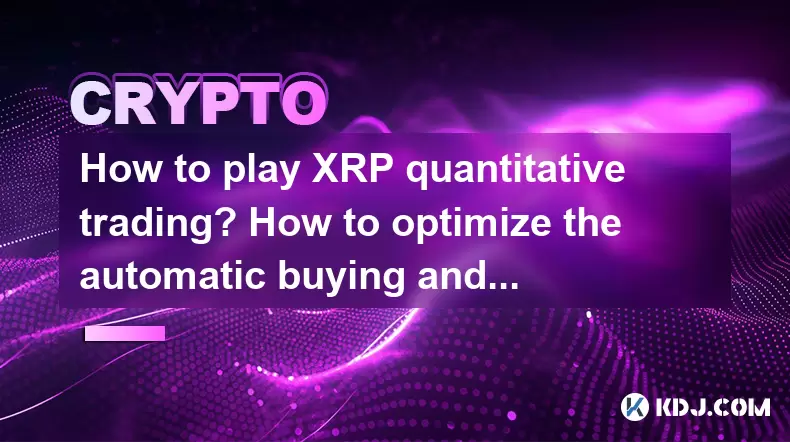-
 Bitcoin
Bitcoin $119000
-2.21% -
 Ethereum
Ethereum $4315
1.01% -
 XRP
XRP $3.151
-3.11% -
 Tether USDt
Tether USDt $0.0000
0.00% -
 BNB
BNB $808.5
-0.71% -
 Solana
Solana $175.8
-4.21% -
 USDC
USDC $0.9999
0.00% -
 Dogecoin
Dogecoin $0.2250
-3.92% -
 TRON
TRON $0.3469
1.77% -
 Cardano
Cardano $0.7818
-3.81% -
 Chainlink
Chainlink $21.47
-2.10% -
 Hyperliquid
Hyperliquid $43.30
-6.81% -
 Stellar
Stellar $0.4370
-2.84% -
 Sui
Sui $3.682
-4.40% -
 Bitcoin Cash
Bitcoin Cash $590.8
2.67% -
 Hedera
Hedera $0.2484
-5.20% -
 Ethena USDe
Ethena USDe $1.001
0.00% -
 Avalanche
Avalanche $23.10
-4.29% -
 Litecoin
Litecoin $119.2
-3.96% -
 Toncoin
Toncoin $3.409
0.90% -
 UNUS SED LEO
UNUS SED LEO $9.016
-1.29% -
 Shiba Inu
Shiba Inu $0.00001304
-3.82% -
 Uniswap
Uniswap $11.18
1.33% -
 Polkadot
Polkadot $3.913
-3.51% -
 Cronos
Cronos $0.1672
-3.08% -
 Dai
Dai $1.000
0.02% -
 Ethena
Ethena $0.7899
-4.70% -
 Bitget Token
Bitget Token $4.400
-1.23% -
 Pepe
Pepe $0.00001132
-5.93% -
 Monero
Monero $257.9
-6.44%
How to play XRP quantitative trading? How to optimize the automatic buying and selling strategy?
To optimize XRP quantitative trading, use algorithms to analyze market data, implement risk management, and adapt strategies to handle high volatility effectively.
May 20, 2025 at 06:07 am

How to Play XRP Quantitative Trading? How to Optimize the Automatic Buying and Selling Strategy?
Quantitative trading in the cryptocurrency market, specifically with XRP, involves using algorithms and mathematical models to identify trading opportunities and execute trades automatically. This approach can be highly effective in the volatile crypto market, where manual trading may not be fast enough to capitalize on rapid price movements. In this article, we will explore how to engage in XRP quantitative trading and optimize automatic buying and selling strategies.
Understanding XRP Quantitative Trading
Quantitative trading leverages statistical and computational methods to analyze market data and make trading decisions. For XRP, this means developing algorithms that can predict price movements based on historical data, market trends, and other relevant indicators.
To start with XRP quantitative trading, you need to have a solid understanding of both the XRP market and the principles of quantitative analysis. This includes familiarity with programming languages like Python, which is widely used in the trading community for its powerful libraries and frameworks such as pandas, numpy, and scikit-learn.
Setting Up Your Trading Environment
Before you can begin trading XRP quantitatively, you need to set up a suitable trading environment. This involves choosing a reliable cryptocurrency exchange that supports XRP trading and offers APIs for algorithmic trading.
- Choose a reputable exchange: Look for exchanges like Binance, Kraken, or Coinbase Pro, which have robust APIs and support XRP trading.
- Set up an API key: Most exchanges require you to generate an API key, which you will use to connect your trading algorithms to the exchange.
- Install necessary software: You will need to install Python and relevant libraries. Use a virtual environment to manage dependencies and avoid conflicts.
- Configure your trading bot: Use a framework like ccxt or the exchange's own API to build and configure your trading bot.
Developing Your Trading Algorithm
Developing a trading algorithm for XRP involves several steps, including data collection, analysis, and strategy formulation. Here’s how you can approach this:
- Collect historical data: Use APIs or data providers to gather historical price data for XRP. This data will be the foundation of your analysis.
- Analyze the data: Use statistical and machine learning techniques to identify patterns and trends. Common techniques include time series analysis, regression models, and neural networks.
- Formulate a strategy: Based on your analysis, develop a trading strategy. This could be a simple moving average crossover strategy or a more complex model using multiple indicators.
- Backtest your strategy: Use historical data to test your strategy and see how it would have performed in the past. Tools like Backtrader or Zipline can help with this.
- Optimize the strategy: Adjust parameters and refine your model to improve performance. This may involve using techniques like genetic algorithms or grid search.
Implementing and Running Your Trading Bot
Once you have developed and backtested your trading algorithm, you can implement it in a live trading environment. Here are the steps to follow:
- Connect to the exchange: Use your API key to connect your trading bot to the exchange. Ensure that you have set appropriate permissions to allow trading.
- Deploy your algorithm: Run your algorithm on a server or cloud platform to ensure continuous operation. Services like AWS, Google Cloud, or DigitalOcean can be used for this purpose.
- Monitor performance: Keep an eye on your bot’s performance and make adjustments as necessary. Use logging and monitoring tools to track trades and performance metrics.
Optimizing Automatic Buying and Selling Strategies
Optimizing your automatic buying and selling strategies for XRP involves several key considerations:
- Risk management: Implement stop-loss and take-profit orders to manage risk. Adjust these levels based on market volatility and your risk tolerance.
- Position sizing: Determine the size of your trades based on your account balance and risk management rules. This helps to control the impact of losing trades.
- Frequency of trades: Adjust the frequency of your trades based on market conditions. In highly volatile markets, you may want to trade more frequently, while in stable markets, you may want to trade less often.
- Incorporating multiple indicators: Use a combination of technical indicators to improve the accuracy of your trading signals. Common indicators include RSI, MACD, and Bollinger Bands.
- Adaptive strategies: Develop strategies that can adapt to changing market conditions. This could involve using machine learning models that can learn from new data and adjust their predictions accordingly.
Handling Market Volatility
XRP, like other cryptocurrencies, is known for its high volatility. Your trading strategy needs to account for this volatility to be effective. Here are some ways to handle market volatility:
- Volatility-based stop-losses: Adjust your stop-loss levels based on the current volatility of XRP. This can help to prevent your trades from being stopped out prematurely.
- Volatility filters: Use volatility filters to determine when to trade. For example, you might only trade when the volatility is within a certain range.
- Diversification: Consider trading multiple cryptocurrencies, not just XRP, to spread your risk. This can help to mitigate the impact of volatility in any single market.
Continual Improvement and Learning
Quantitative trading is an ongoing process of learning and improvement. To stay ahead in the XRP market, you need to continuously refine your strategies and stay updated with the latest market trends and technological advancements.
- Stay informed: Keep up with news and developments in the XRP market. This can help you to anticipate market movements and adjust your strategies accordingly.
- Learn from others: Join trading communities and forums to learn from other traders. Share your experiences and learn from theirs.
- Experiment with new strategies: Don’t be afraid to try new approaches and strategies. Experimentation is key to finding what works best for you.
Frequently Asked Questions
Q: Can I use pre-built trading bots for XRP quantitative trading?
A: Yes, there are pre-built trading bots available that you can use for XRP quantitative trading. Platforms like 3Commas and Cryptohopper offer customizable bots that can be configured for XRP trading. However, using a pre-built bot may limit your ability to customize and optimize your strategy compared to building your own.
Q: How much capital do I need to start XRP quantitative trading?
A: The amount of capital you need to start XRP quantitative trading depends on your trading strategy and risk tolerance. Some traders start with as little as $100, while others may require thousands of dollars. It’s important to start with an amount you can afford to lose, as trading carries inherent risks.
Q: Is it necessary to have a background in finance or programming to engage in XRP quantitative trading?
A: While a background in finance or programming can be helpful, it is not strictly necessary. Many resources and courses are available that can teach you the basics of quantitative trading and programming. However, a willingness to learn and a dedication to continuous improvement are essential for success in this field.
Q: How can I protect my trading bot from being hacked?
A: To protect your trading bot from being hacked, use strong, unique passwords for your exchange accounts and API keys. Enable two-factor authentication (2FA) wherever possible. Additionally, limit the permissions of your API keys to only what is necessary for trading, and regularly monitor your bot’s activity for any suspicious behavior.
Disclaimer:info@kdj.com
The information provided is not trading advice. kdj.com does not assume any responsibility for any investments made based on the information provided in this article. Cryptocurrencies are highly volatile and it is highly recommended that you invest with caution after thorough research!
If you believe that the content used on this website infringes your copyright, please contact us immediately (info@kdj.com) and we will delete it promptly.
- PumpFun (PUMP) Price: Riding the Meme Coin Wave or Facing a Wipeout?
- 2025-08-12 16:50:12
- Arctic Pablo Coin: Meme Coin Growth Redefined?
- 2025-08-12 16:50:12
- Ether ETFs Surge: Inflows and Bull Signs Point to $4K ETH?
- 2025-08-12 16:30:12
- Bitcoin, Crypto Market, and CPI Anticipation: A New York Minute on Volatility
- 2025-08-12 16:30:12
- Bitcoin, CPI, and Market Fears: Navigating the Crypto Landscape
- 2025-08-12 15:10:13
- BTC Traders Eye ETH Targets as CPI Looms: A New York Minute
- 2025-08-12 15:10:13
Related knowledge

How to purchase Aragon (ANT)?
Aug 09,2025 at 11:56pm
Understanding Aragon (ANT) and Its PurposeAragon (ANT) is a decentralized governance token that powers the Aragon Network, a platform built on the Eth...

Where to trade Band Protocol (BAND)?
Aug 10,2025 at 11:36pm
Understanding the Role of Private Keys in Cryptocurrency WalletsIn the world of cryptocurrency, a private key is one of the most critical components o...

What is the most secure way to buy Ocean Protocol (OCEAN)?
Aug 10,2025 at 01:01pm
Understanding Ocean Protocol (OCEAN) and Its EcosystemOcean Protocol (OCEAN) is a decentralized data exchange platform built on blockchain technology,...

Where can I buy UMA (UMA)?
Aug 07,2025 at 06:42pm
Understanding UMA and Its Role in Decentralized FinanceUMA (Universal Market Access) is an Ethereum-based decentralized finance (DeFi) protocol design...

What exchanges offer Gnosis (GNO)?
Aug 12,2025 at 12:42pm
Overview of Gnosis (GNO) and Its Role in the Crypto EcosystemGnosis (GNO) is a decentralized prediction market platform built on the Ethereum blockcha...

How to buy Storj (STORJ) tokens?
Aug 09,2025 at 07:28am
Understanding Storj (STORJ) and Its Role in Decentralized StorageStorj is a decentralized cloud storage platform that leverages blockchain technology ...

How to purchase Aragon (ANT)?
Aug 09,2025 at 11:56pm
Understanding Aragon (ANT) and Its PurposeAragon (ANT) is a decentralized governance token that powers the Aragon Network, a platform built on the Eth...

Where to trade Band Protocol (BAND)?
Aug 10,2025 at 11:36pm
Understanding the Role of Private Keys in Cryptocurrency WalletsIn the world of cryptocurrency, a private key is one of the most critical components o...

What is the most secure way to buy Ocean Protocol (OCEAN)?
Aug 10,2025 at 01:01pm
Understanding Ocean Protocol (OCEAN) and Its EcosystemOcean Protocol (OCEAN) is a decentralized data exchange platform built on blockchain technology,...

Where can I buy UMA (UMA)?
Aug 07,2025 at 06:42pm
Understanding UMA and Its Role in Decentralized FinanceUMA (Universal Market Access) is an Ethereum-based decentralized finance (DeFi) protocol design...

What exchanges offer Gnosis (GNO)?
Aug 12,2025 at 12:42pm
Overview of Gnosis (GNO) and Its Role in the Crypto EcosystemGnosis (GNO) is a decentralized prediction market platform built on the Ethereum blockcha...

How to buy Storj (STORJ) tokens?
Aug 09,2025 at 07:28am
Understanding Storj (STORJ) and Its Role in Decentralized StorageStorj is a decentralized cloud storage platform that leverages blockchain technology ...
See all articles

























































































